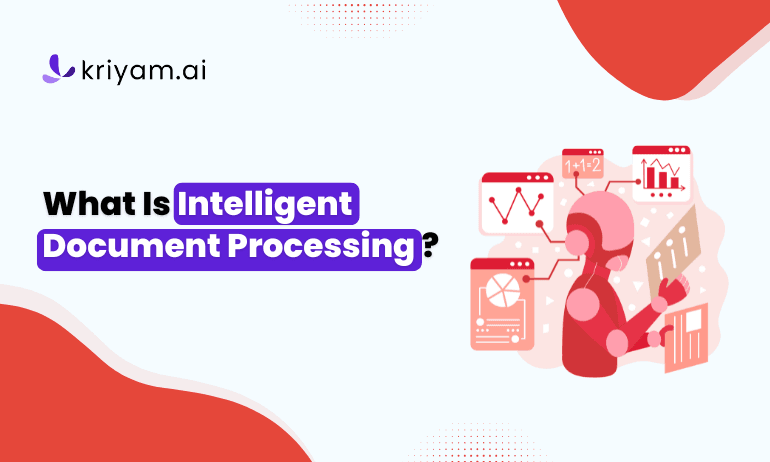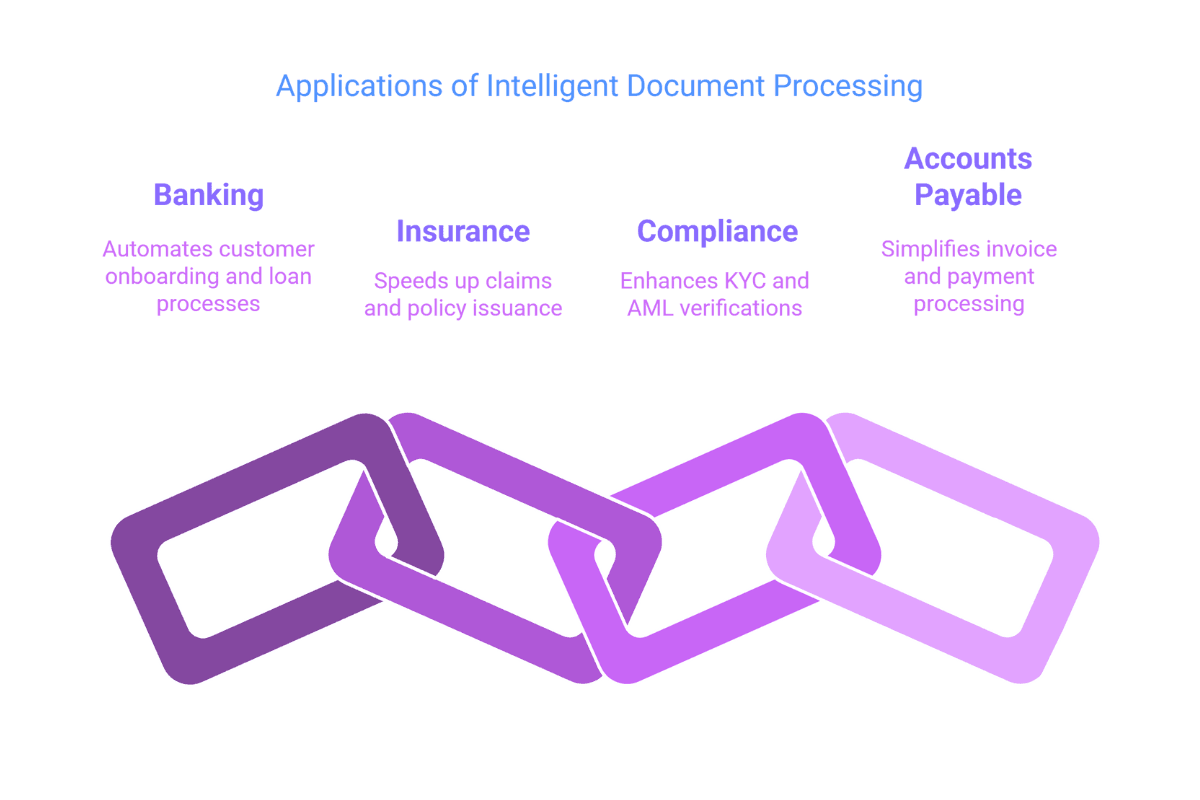What is Intelligent Document Processing (IDP)?
Sharlyn Bedi | 5th May, 2025
3 min reads
Sharlyn Bedi | 5th May, 2025 | 3 min reads

Managing documents has always been central to business operations. However, the scale, speed, and complexity of information today have made manual handling both inefficient and risky. From insurance claims to compliance forms, organizations are under constant pressure to process documents faster, more accurately, and with full regulatory alignment.
In this article, we explore what intelligent document processing is, how it works, and why it is becoming critical for document-driven industries.
What actually is IDP in simple terms?
Intelligent Document Processing is a modern approach that uses AI for document processing to capture, classify, and extract important information from various types of documents. It works seamlessly across structured formats such as forms and invoices, as well as unstructured inputs like handwritten notes or emails, interpreting and organizing data with minimal manual effort.
It also makes information retrieval smarter and workflows lighter. Using IDP software, companies can extract, validate, and organize data at scale, allowing teams to shift focus from manual tasks to strategic initiatives.
Unlike traditional OCR, which only scans and digitizes text, intelligent document processing software understands context and relationships between data points. It extracts insights and structures them in a way that downstream systems can use directly.
This means faster access to reliable data that supports better decision-making.
Core Components of IDP
- Optical Character Recognition (OCR): Converts printed or handwritten text from images and scanned files into digital text
- Natural Language Processing (NLP): Interprets the structure, language, and intent of the content
- Machine Learning (ML): Learns from past corrections to improve accuracy over time
- Automation Workflows: Validates, categorizes, and integrates information into business systems without manual input
Together, these technologies allow businesses to process large volumes of documents with greater speed, intelligence, and accuracy.
How IDP Works: A Step-by-Step Breakdown
Here’s how document processing AI organizes and automates document workflows:

1. Ingestion
Captures documents from multiple sources such as email, PDFs, scanned images, and cloud uploads
2. Classification
Identifies and sorts document types such as contracts, invoices, claim forms, or KYC documents
3. Extraction
Selects and pulls out key information like names, dates, ID numbers, or payment details
4. Validation
Checks extracted data against predefined rules or internal databases to ensure accuracy
5. Integration
Delivers structured and validated data to systems like CRM, ERP, or analytics platforms
Key Applications of Intelligent Document Processing
The impact of intelligent document processing in financial services is evident across several high-demand workflows:

Banking: Automates processes like customer onboarding, loan application handling, and financial document checks.
Insurance: Accelerates claims settlement, policy issuance, and underwriting assessments.
Compliance: Supports faster and more reliable KYC and AML verifications.
Accounts Payable: Simplifies invoice capture, matching, and payment processing.
👉 For a deeper look into industry-specific use cases, check out our blog on How IDP Is Revolutionizing BFSI Document Workflows
Why is IDP a Game-Changer For Your Business?
The impact of AI for document processing goes beyond speed. It transforms the way organizations operate: ✅ Increased Efficiency: Processes documents in minutes instead of days. ✅ Higher Accuracy: Reduces manual errors with AI-powered data extraction. ✅ Cost Reduction: Cuts labor costs by minimizing manual effort. ✅ Better Compliance: Creates secure, audit-ready document trails. ✅ Scalability: Handles growing document volumes without needing to expand teams. With intelligent automation, businesses gain the agility to respond faster to customer needs and regulatory changes.
Conclusion
Documents drive decisions, but traditional processing methods slow businesses down and expose them to costly errors. Intelligent Document Processing software changes that by introducing speed, accuracy, and control into document-driven workflows.
With Kriyam.ai, financial institutions and enterprises can unlock smarter operations, stronger compliance, and significant cost savings. As document volumes grow and regulatory expectations rise, adopting AI for document processing will be key to staying competitive and resilient.
If you invest early in intelligent document processing solutions, you’ll manage documents better and lead the future of intelligent business operations.
FAQs
Q1: What makes IDP different from traditional OCR?
OCR only extracts text. IDP extracts, understands, validates, and organizes the data intelligently.
Q2: Is IDP software secure?
Yes. Kriyam.ai ensures data security with encryption, access control, and audit trails.
Q3: Does IDP support different document formats?
Absolutely. It can process PDFs, scanned images, emails, and even handwritten notes.
Q4: Can small and mid-sized businesses use IDP?
Yes, IDP solutions like Kriyam are scalable and flexible for businesses of all sizes.
Q5: Which industries benefit the most from IDP?
Financial services, insurance, healthcare, legal, and government sectors are among the top adopters.
About the author
Sharlyn Bedi
Junior Content Strategist
Sharlyn Bedi | Junior Content Strategist
A passionate writer with a knack for automation and process optimisation. Through clear, actionable insights, her content is best for leaders to stay updated on latest trends on technology and automation.
Interests: Business Automation, Process Optimization, Digital Transformation
Content Overview
Unlock AI-Powered Document Extraction
Try It for FREE – Extract Text and Tables in Seconds
Share
FEATURED
Automation
Top 5 Best Field Service Management Software in 2025
Best Field Service Management Software
Shreyas R
27th November, 2023



